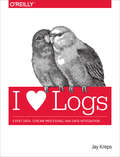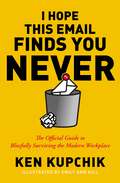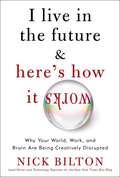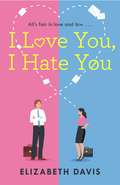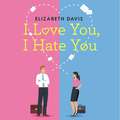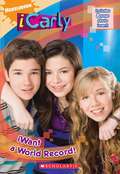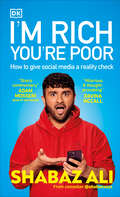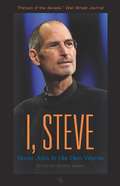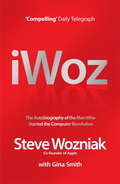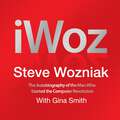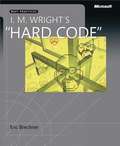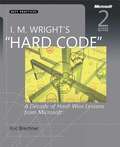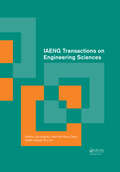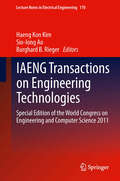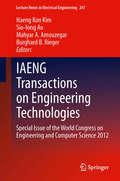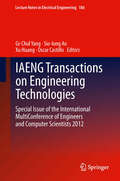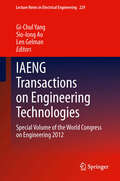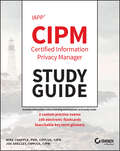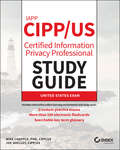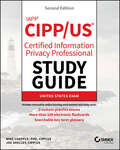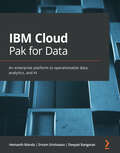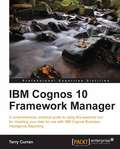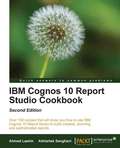- Table View
- List View
I Heart Logs: Event Data, Stream Processing, and Data Integration
by Jay KrepsWhy a book about logs? That’s easy: the humble log is an abstraction that lies at the heart of many systems, from NoSQL databases to cryptocurrencies. Even though most engineers don’t think much about them, this short book shows you why logs are worthy of your attention.Based on his popular blog posts, LinkedIn principal engineer Jay Kreps shows you how logs work in distributed systems, and then delivers practical applications of these concepts in a variety of common uses—data integration, enterprise architecture, real-time stream processing, data system design, and abstract computing models.Go ahead and take the plunge with logs; you’re going love them.Learn how logs are used for programmatic access in databases and distributed systemsDiscover solutions to the huge data integration problem when more data of more varieties meet more systemsUnderstand why logs are at the heart of real-time stream processingLearn the role of a log in the internals of online data systemsExplore how Jay Kreps applies these ideas to his own work on data infrastructure systems at LinkedIn
I Hope This Email Finds You Never: A Complete Guide to Blissfully Surviving the Modern Workplace
by Ken Kupchik Emily Ann HillAhhh, the modern workplace: a cauldron of stress and anxiety. From the moment we accept a new role, we&’re thrown into a world of competing personalities, shifting protocols, and an endless stream of emails, Slack messages, and Zoom calls, all of which serve to distract us from the things we truly want to be doing, like eating Thai food and sleeping until noon.I Hope This Email Finds You Never puts aside the motivational screeds, productivity hacks, and pop-science, and focuses instead on those things in the workplace that truly cause us grief—like a coworker eating an apple during a video call—in a lighthearted, entertaining, and (most importantly) cynical way.Some things you&’ll learn:How long you can get away with being &“new&” until you&’re held accountableHow to make it look like you&’re sorry without giving up any powerHow to find a workplace friend and make a workplace enemy Camera position: how to set up your laptop for maximum dominanceOrganizing your calendar while leaving time to cryThe rules of the kitchen (stealing someone&’s yogurt is literally a crime)Writing a letter of resignation when you&’ve already been resigned from day one From Orientation (The Descent), Workplace Etiquette (No Eye Contact Before 11 AM), Working Remotely (Wink Wink), Coworkers (Getting Along with your fellow inmates), and everything in between, I Hope This Email Finds You Never is your must-have guide to surviving (thriving is not realistic) in the modern workplace.
I Live in the Future and Here's How It Works: How New Media Is Creatively Disrupting Your World, Work, and Brain
by Nick BiltonExploring how the Internet is creating a new type of consumer, Bilton's book captures the zeitgeist of an emerging age, providing the understanding of how a radically changed media world is influencing human behavior.
I Love You, I Hate You: All's fair in love and law in this irresistible enemies-to-lovers rom-com!
by Elizabeth Davis'Everything you love about romantic comedy - hilarious, sharply observed, smart, and sexy as hell. I adored this book!' Rachel Hawkins, New York Times bestselling author'Smart, sexy, and feminist, I Love You, I Hate You is a delightful love letter to internet friends and Nora Ephron. Elizabeth Davis just became an auto-buy author for me' Annette Christie'Complete You've Got Mail magic! Davis's humor made this steamy, feisty rom-com a delight to read . . . a must read for fans of Nora Ephron rom-coms!' Denise WilliamsAll's fair in love and law... You've Got Mail meets Dating You/Hating You by Christina Lauren and The Hating Game by Sally Thorne in this sizzling rom-com debut - readers love it! 'A five-star read . . . the best read of the year, if you like your rom coms witty and sweet then you need this story in your life' 5* reader review'Elizabeth Davis's way of writing romance is perfect . . . Amazing characters and writing, 5/5 stars!' 5* reader review'Everything I wanted and more! Their chemistry was perfect . . . If only I could go back in time and read this book for the first time again' 5* reader review.........................................................................................................Victoria and Owen are bitter rivals.Nora and Luke are friends online.Who would believe these two couples have anything in common?Of all the decisions brilliant lawyer Victoria Clemenceaux has made in her life, an unforgettable one-night stand with her opposing counsel Owen Pohl is either the worst...or the best. One thing is certain: these long-standing rivals aren't going to let their searing attraction stop them from winning the biggest case of their careers. Thankfully Victoria and Owen have someone to vent to about their nemeses. But they have no idea that their online 'friends', Nora and Luke, are the very people they hate in real life. As Nora and Luke grow closer online, and Victoria and Owen find their undeniable attraction harder to resist, the lines between love and hate blur. When the truth comes out, will their online chemistry work in the real world, or will their constant rivalry sever their connection?.........................................................................................................Raves for I Love You, I Hate You'This book made my heart sing . . . There's such tenderness and passion and LIFE . . . Go buy this book immediately''So good that I devoured the whole book in one sitting''You know when you find a book you love so much you accidentally stay up until well after 2am to finish it in one sitting? . . . That's this book!. . . A fun, fast paced debut romance that I could read again and again'
I Love You, I Hate You: All's fair in love and law in this irresistible enemies-to-lovers rom-com!
by Elizabeth Davis'Everything you love about romantic comedy - hilarious, sharply observed, smart, and sexy as hell. I adored this book!' Rachel Hawkins, New York Times bestselling author'Smart, sexy, and feminist, I Love You, I Hate You is a delightful love letter to internet friends and Nora Ephron. Elizabeth Davis just became an auto-buy author for me' Annette Christie'Complete You've Got Mail magic! Davis's humor made this steamy, feisty rom-com a delight to read . . . a must read for fans of Nora Ephron rom-coms!' Denise WilliamsAll's fair in love and law . . . You've Got Mail meets Dating You/Hating You by Christina Lauren and The Hating Game by Sally Thorne in this sizzling rom-com - readers love it! 'A five-star read . . . the best read of the year, if you like your rom coms witty and sweet then you need this story in your life' ⭐ ⭐ ⭐ ⭐ ⭐ reader review'Elizabeth Davis's way of writing romance is perfect . . . Amazing characters and writing, 5/5 stars!' ⭐ ⭐ ⭐ ⭐ ⭐ reader review'Everything I wanted and more! Their chemistry was perfect . . . If only I could go back in time and read this book for the first time again' ⭐ ⭐ ⭐ ⭐ ⭐ reader review.........................................................................................................Victoria and Owen are bitter rivals.Nora and Luke are friends online.Who would believe these two couples have anything in common?Of all the decisions brilliant lawyer Victoria Clemenceaux has made in her life, an unforgettable one-night stand with her opposing counsel Owen Pohl is either the worst...or the best. One thing is certain: these long-standing rivals aren't going to let their searing attraction stop them from winning the biggest case of their careers. Thankfully Victoria and Owen have someone to vent to about their nemeses. But they have no idea that their online 'friends', Nora and Luke, are the very people they hate in real life. As Nora and Luke grow closer online, and Victoria and Owen find their undeniable attraction harder to resist, the lines between love and hate blur. When the truth comes out, will their online chemistry work in the real world, or will their constant rivalry sever their connection?.........................................................................................................Raves for I Love You, I Hate You!'This book made my heart sing . . . There's such tenderness and passion and LIFE . . . Go buy this book immediately''So good that I devoured the whole book in one sitting''You know when you find a book you love so much you accidentally stay up until well after 2am to finish it in one sitting? . . . That's this book!. . . A fun, fast-paced debut romance that I could read again and again'
I Love You, I Hate You: All's fair in love and law in this irresistible enemies-to-lovers rom-com!
by Elizabeth Davis'Smart, sexy, and feminist, I Love You, I Hate You is a delightful love letter to internet friends and Nora Ephron. Elizabeth Davis just became an auto-buy author for me' Annette Christie, author of The Rehearsals All's fair in love and law...You've Got Mail meets Dating You/Hating You by Christina Lauren and The Hating Game by Sally Thorne in this sizzling rom-com debut.Victoria and Owen are bitter rivals. Nora and Luke are friends online. Who would believe these two couples have anything in common? Of all the decisions brilliant lawyer Victoria Clemenceaux has made in her life, an unforgettable one-night stand with her opposing counsel Owen Pohl is either the worst... or the best. One thing is certain: these long-standing rivals aren't going to let their searing attraction stop them from winning the biggest case of their careers. Thankfully Victoria and Owen have someone to vent to about their nemeses. But they have no idea that their online 'friends', Nora and Luke, are the very people they hate in real life. As Nora and Luke grow closer online, and Victoria and Owen find their undeniable attraction harder to resist, the lines between love and hate blur. When the truth comes out, will their online chemistry work in the real world, or will their constant rivalry sever their connection?(P) 2021 Headline Publishing Group Ltd
I Want a World Record! (iCarly)
by Laurie McelroyCarly wants to break the record for the longest Webcast. Can she keep the show going more than 24 hours? "iCarly", seen weekly on Nickelodeon, is all about friends, family, building a Web site, and life.
I'm Feeling Lucky: The Confessions of Google Employee Number 59
by Douglas EdwardsA marketing director&’s story of working at a startup called Google in the early days of the tech boom: &“Vivid inside stories . . . Engrossing&” (Ken Auletta). Douglas Edwards wasn&’t an engineer or a twentysomething fresh out of school when he received a job offer from a small but growing search engine company at the tail end of the 1990s. But founders Larry Page and Sergey Brin needed staff to develop the brand identity of their brainchild, and Edwards fit the bill with his journalistic background at the San Jose Mercury News, the newspaper of Silicon Valley. It was a change of pace for Edwards, to say the least, and put him in a unique position to interact with and observe the staff as Google began its rocket ride to the top. In entertaining, self-deprecating style, he tells his story of participating in this moment of business and technology history, giving readers a chance to fully experience the bizarre mix of camaraderie and competition at this phenomenal company. Edwards, Google&’s first director of marketing and brand management, describes the idiosyncratic Page and Brin, the evolution of the famously nonhierarchical structure in which every employee finds a problem to tackle and works independently, the races to develop and implement each new feature, and the many ideas that never came to pass. I&’m Feeling Lucky reveals what it&’s like to be &“indeed lucky, sort of an accidental millionaire, a reluctant bystander in a sea of computer geniuses who changed the world. This is a rare look at what happened inside the building of the most important company of our time&” (Seth Godin, author of Linchpin). &“An affectionate, compulsively readable recounting of the early years (1999–2005) of Google . . . This lively, thoughtful business memoir is more entertaining than it really has any right to be, and should be required reading for startup aficionados.&” —Publishers Weekly, starred review &“Edwards recounts Google&’s stumbles and rise with verve and humor and a generosity of spirit. He kept me turning the pages of this engrossing tale.&” —Ken Auletta, author of Greed and Glory on Wall Street &“Funny, revealing, and instructive, with an insider&’s perspective I hadn&’t seen anywhere before. I thought I had followed the Google story closely, but I realized how much I&’d missed after reading—and enjoying—this book.&” —James Fallows, author of China Airborne
I'm Rich, You're Poor: How to Give Social Media a Reality Check
by Shabaz AliThe world is full of books about how to be rich. This is not one of them.Today, many of us are feeling the pinch - and being bombarded with portrayals of social media 'perfection' is making that pinch feel more like a punch.We may know that social media - with all its billionaires and beauty queens - is just a highlight reel. So why is it still making most of us feel so low?Comedian Shabaz Ali wants to help you see the funny side of social media again. Because while it looks nice to live up in an ivory tower, this book reminds us that it is much more fun to be part of the baying mob that surrounds it.This laugh-out-loud deep-dive into social media's ridiculously rich, will help you love your own penny-pinched, rough-around-the-edges, extraordinarily ordinary life.
I, Steve: Steve Jobs in His Own Words
by George BeahmThe quotes in "I, Steve" encapsulate everything I learned while I was at Apple: Paying attention to little details (because they matter). Relentless simplification. Knowing what to say 'no' to. These principles can apply to many aspects of business and reading them in Steve's words are an excellent reminder that we don't have to settle for mediocrity. This is not a biography, nor is it an exploitation of the man's death, as this book has been scheduled for publication for many months now. This book is an essential tool for how to think about the problems you wrestle with at work. Bring a copy to your office. Start off every meeting reading a random quote. See what happens.
I, Woz
by Steve WozniakI, WOZ offers readers a unique glimpse into the offbeat and brilliant but ethical mind that conceived the Macintosh. After 25 years avoiding the public eye, Steve Wozniak reveals the full story of the Apple computer, from its conception to his views on the iconic cult status it has achieved today. In June 1975 Steve's curiosity and determination inspired him to build a computer, the first Apple. Six months later, he sold the machine, and for the self-professed 'engineer's engineer', success was imminent. But this story is full of life lessons, critical decisions, huge triumphs and big mistakes. Steve speaks also of his childhood, phone hacking pranks, working at Hewlett-Packard, the life-changing plane crash and teaching.
I, Woz
by Steve WozniakI, WOZ offers readers a unique glimpse into the offbeat and brilliant but ethical mind that conceived the Macintosh. After 25 years avoiding the public eye, Steve Wozniak reveals the full story of the Apple computer, from its conception to his views on the iconic cult status it has achieved today. In June 1975 Steve's curiosity and determination inspired him to build a computer, the first Apple. Six months later, he sold the machine, and for the self-professed 'engineer's engineer', success was imminent. But this story is full of life lessons, critical decisions, huge triumphs and big mistakes. Steve speaks also of his childhood, phone hacking pranks, working at Hewlett-Packard, the life-changing plane crash and teaching.(P)2007 Tantor Media Inc
I. M. Wright's "Hard Code"
by Eric BrechnerGet the brutal truth about coding, testing, and project management--from a Microsoft insider who tells it like it is. I. M. Wright's deliberately provocative column "Hard Code" has been sparking debate amongst thousands of engineers at Microsoft for years. And now (despite our better instincts), we're making his opinions available to everyone. In this collection of 49 columns, Eric Brechner's alter ego pulls no punches with his candid commentary and best practice solutions to the issues that irk him the most. He dissects the development process, examines tough team issues, and critiques how the software business is run--with the added touch of clever humor and sardonic wit. His ideas aren't always popular (not that he cares), but they do stimulate the discussion and imagination needed to drive software excellence. Get the unvarnished truth on how to: Improve software quality and value--from design to security Realistically manage project schedules, risks, and specs Trim the fat from common development inefficiencies Apply process improvement methods--without being an inflexible fanatic Drive your own successful, satisfying career Don't be a dictator--develop and manage a thriving team! Companion Web site includes: Agile process documents Checklists, templates, and other resources
I. M. Wright's "Hard Code": A Decade of Hard-Won Lessons from Microsoft®
by Eric BrechnerGet the brutal truth about coding, testing, and project management--from a Microsoft insider who tells it like it is. I. M. Wright's deliberately provocative column "Hard Code" has been sparking debate amongst thousands of engineers at Microsoft for years. And now (despite our better instincts), we're making his opinions available to everyone. In this collection of over 80 columns, Eric Brechner's alter ego pulls no punches with his candid commentary and best practice solutions to the issues that irk him the most. He dissects the development process, examines tough team issues, and critiques how the software business is run, with the added touch of clever humor and sardonic wit. His ideas aren't always popular (not that he cares), but they do stimulate discussion and imagination needed to drive software excellence. Get the unvarnished truth on how to: Improve software quality and value--from design to security Realistically manage project schedules, risks, and specs Trim the fat from common development inefficiencies Apply process improvement methods--without being an inflexible fanatic Drive your own successful, satisfying career Don't be a dictator--develop and manage a thriving team! Companion Web site includes: Agile process documents Checklists, templates, and other resources
IAENG Transactions on Engineering Sciences: Special Issue of the International MultiConference of Engineers and Computer Scientists 2013 and World Congress on Engineering 2013 (Lecture Notes In Electrical Engineering Ser. #170)
by Sio-Iong Ao Alan Hoi-Shou Chan Hideki Katagiri Li XuTwo large international conferences on Advances in Engineering Sciences were held in Hong Kong, March 13-15, 2013, under the International MultiConference of Engineers and Computer Scientists (IMECS 2013), and in London, U.K., 3-5 July, 2013, under the World Congress on Engineering 2013 (WCE 2013) respectively. IMECS 2013 and WCE 2013 were organize
IAENG Transactions on Engineering Technologies
by Sio-Iong Ao Burghard B. Rieger Haeng Kon KimThis volume contains thirty revised and extended research articles written by prominent researchers participating in an international conference in engineering technologies and physical science and applications. The conference serves as good platforms for the engineering community to meet with each other and to exchange ideas. The conference has also struck a balance between theoretical and application development. The conference is truly international meeting with a high level of participation from many countries. Topics covered include chemical engineering, circuits, communications systems, control theory, engineering mathematics, systems engineering, manufacture engineering, and industrial applications. The book offers the state of art of tremendous advances in engineering technologies and physical science and applications, and also serves as an excellent reference work for researchers and graduate students working with/on engineering technologies and physical science and applications.
IAENG Transactions on Engineering Technologies
by Sio-Iong Ao Burghard B. Rieger Haeng Kon Kim Mahyar A. AmouzegarIAENG Transactions on Engineering Technologies contains forty-nine revised and extended research articles, written by prominent researchers participating in the conference. Topics covered include circuits, engineering mathematics, control theory, communications systems, systems engineering, manufacture engineering, computational biology, chemical engineering, and industrial applications. This book offers the state of art of tremendous advances in engineering technologies and physical science and applications, and also serves as an excellent source of reference for researchers and graduate students working with/on engineering technologies and physical science and applications.
IAENG Transactions on Engineering Technologies
by Sio-Iong Ao Oscar Castillo Gi-Chul Yang Xu HuangThis volume contains revised and extended research articles written by prominent researchers participating in the conference. Topics covered include engineering physics, communications systems, control theory, automation, engineering mathematics, scientific computing, industrial engineering, and industrial applications. IAENG Transactions on Engineering Technologies: Special Issue of the International MultiConference of Engineers and Computer Scientists 2012 offers the state of art of tremendous advances in engineering technologies and physical science and applications, and also serves as an excellent reference work for researchers and graduate students working with/on engineering technologies and physical science and applications.
IAENG Transactions on Engineering Technologies
by Len Gelman Gi-Chul Yang Sio-Long AoThis book contains fifty-eight revised and extended research articles written by prominent researchers participating in the Advances in Engineering Technologies and Physical Science conference, held in London, U.K., 4-6 July, 2012. Topics covered include Applied and Engineering Mathematics, Computational Statistics, Mechanical Engineering, Bioengineering, Internet Engineering, Wireless Networks, Knowledge Engineering, Computational Intelligence, High Performance Computing, Manufacturing Engineering, and industrial applications. The book offers the state of art of tremendous advances in engineering technologies and physical science and applications, and also serves as an excellent reference work for researchers and graduate students working on engineering technologies and physical science and applications.
IAPP CIPM Certified Information Privacy Manager Study Guide
by Mike Chapple Joe ShelleyAn essential resource for anyone preparing for the CIPM certification exam and a career in information privacy As cybersecurity and privacy become ever more important to the long-term viability and sustainability of enterprises in all sectors, employers and professionals are increasingly turning to IAPP’s trusted and recognized Certified Information Privacy Manager qualification as a tried-and-tested indicator of information privacy management expertise. In IAPP CIPM Certified Information Privacy Manager Study Guide, a team of dedicated IT and privacy management professionals delivers an intuitive roadmap to preparing for the CIPM certification exam and for a new career in the field of information privacy. Make use of pre-assessments, the Exam Essentials feature, and chapter review questions with detailed explanations to gauge your progress and determine where you’re proficient and where you need more practice. In the book, you’ll find coverage of every domain tested on the CIPM exam and those required to succeed in your first—or your next—role in a privacy-related position. You’ll learn to develop a privacy program and framework, as well as manage the full privacy program operational lifecycle, from assessing your organization’s needs to responding to threats and queries. The book also includes: A head-start to obtaining an in-demand certification used across the information privacy industry Access to essential information required to qualify for exciting new career opportunities for those with a CIPM credential Access to the online Sybex learning environment, complete with two additional practice tests, chapter review questions, an online glossary, and hundreds of electronic flashcards for efficient studyingAn essential blueprint for success on the CIPM certification exam, IAPP CIPM Certified Information Privacy Manager Study Guide will also ensure you hit the ground running on your first day at a new information privacy-related job.
IAPP CIPP / US Certified Information Privacy Professional Study Guide
by Mike Chapple Joe ShelleyIAPP CIPP / US Certified Information Privacy Professional STUDY GUIDE Your ultimate guide to preparing for the CIPP/US examThe IAPP CIPP / US Certified Information Privacy Professional Study Guide is your one-stop resource for complete coverage of the challenging CIPP/US exam. This Study Guide covers 100% of the CIPP/US domain competencies. You’ll prepare for the exam smarter and faster with Sybex thanks to authoritative and accurate content including practice tests that validate and measure exam readiness. Including an assessment exam, end of chapter review questions, and the two complete practice exams, you get more than 350 questions to hone your test taking skills. You’ll be ready to tackle the rigorous demands of work in the privacy field as you reinforce and retain what you’ve learned with the Sybex online learning environment and test bank, accessible across multiple devices. Get prepared for the CIPP/US exam, and a job in the privacy sector.Coverage of 100% of all exam objectives in this Study Guide means you’ll be ready for:The US privacy environment, including the structure and enforcement of US lawLegal limits on private-sector collection and use of dataGovernment and court access to private-sector informationWorkplace privacyState privacy lawsInteractive learning environmentTake your exam prep to the next level with Sybex’s superior interactive online study tools. To access our learning environment, simply visit www.wiley.com/go/sybextestprep, register your book to receive your unique PIN, and instantly gain one year of FREE access after activation to:Interactive test bank with 2 custom practice exams to help you identify areas where further review is needed. Get more than 90% of the answers correct, and you’re ready to take the certification exam.More than 100 electronic flashcards to reinforce learning and last-minute prep before the examComprehensive glossary in PDF format gives you instant access to the key terms so you are fully preparedAbout the CIPP/US ProgramThe IAPP CIPP/US certification is the ideal credential for those needing a comprehensive understanding of the United States’ data privacy laws and regulations who wish to assist organizations bolster compliance and risk mitigation practices. Visit https://iapp.org/certify/cipp/ for more information.
IAPP CIPP / US Certified Information Privacy Professional Study Guide (Sybex Study Guide)
by Mike Chapple Joe ShelleyPrepare for success on the IAPP CIPP/US exam and further your career in privacy with this effective study guide - now includes a downloadable supplement to get you up to date on the current CIPP exam for 2024-2025! Information privacy has become a critical and central concern for small and large businesses across the United States. At the same time, the demand for talented professionals able to navigate the increasingly complex web of legislation and regulation regarding privacy continues to increase. Written from the ground up to prepare you for the United States version of the Certified Information Privacy Professional (CIPP) exam, Sybex's IAPP CIPP/US Certified Information Privacy Professional Study Guide also readies you for success in the rapidly growing privacy field. You'll efficiently and effectively prepare for the exam with online practice tests and flashcards as well as a digital glossary. The concise and easy-to-follow instruction contained in the IAPP/CIPP Study Guide covers every aspect of the CIPP/US exam, including the legal environment, regulatory enforcement, information management, private sector data collection, law enforcement and national security, workplace privacy and state privacy law, and international privacy regulation. Provides the information you need to gain a unique and sought-after certification that allows you to fully understand the privacy framework in the US Fully updated to prepare you to advise organizations on the current legal limits of public and private sector data collection and use Includes 1 year free access to the Sybex online learning center, with chapter review questions, full-length practice exams, hundreds of electronic flashcards, and a glossary of key terms, all supported by Wiley's support agents who are available 24x7 via email or live chat to assist with access and login questions Perfect for anyone considering a career in privacy or preparing to tackle the challenging IAPP CIPP exam as the next step to advance an existing privacy role, the IAPP CIPP/US Certified Information Privacy Professional Study Guide offers you an invaluable head start for success on the exam and in your career as an in-demand privacy professional.
IBM Cloud Pak for Data: An enterprise platform to operationalize data, analytics, and AI
by Sriram Srinivasan Hemanth Manda Deepak RangaraoBuild end-to-end AI solutions with IBM Cloud Pak for Data to operationalize AI on a secure platform based on cloud-native reliability, cost-effective multitenancy, and efficient resource managementKey FeaturesExplore data virtualization by accessing data in real time without moving itUnify the data and AI experience with the integrated end-to-end platformExplore the AI life cycle and learn to build, experiment, and operationalize trusted AI at scaleBook DescriptionCloud Pak for Data is IBM's modern data and AI platform that includes strategic offerings from its data and AI portfolio delivered in a cloud-native fashion with the flexibility of deployment on any cloud. The platform offers a unique approach to addressing modern challenges with an integrated mix of proprietary, open-source, and third-party services. You'll begin by getting to grips with key concepts in modern data management and artificial intelligence (AI), reviewing real-life use cases, and developing an appreciation of the AI Ladder principle. Once you've gotten to grips with the basics, you will explore how Cloud Pak for Data helps in the elegant implementation of the AI Ladder practice to collect, organize, analyze, and infuse data and trustworthy AI across your business. As you advance, you'll discover the capabilities of the platform and extension services, including how they are packaged and priced. With the help of examples present throughout the book, you will gain a deep understanding of the platform, from its rich capabilities and technical architecture to its ecosystem and key go-to-market aspects. By the end of this IBM book, you'll be able to apply IBM Cloud Pak for Data's prescriptive practices and leverage its capabilities to build a trusted data foundation and accelerate AI adoption in your enterprise.What you will learnUnderstand the importance of digital transformations and the role of data and AI platformsGet to grips with data architecture and its relevance in driving AI adoption using IBM's AI LadderUnderstand Cloud Pak for Data, its value proposition, capabilities, and unique differentiatorsDelve into the pricing, packaging, key use cases, and competitors of Cloud Pak for DataUse the Cloud Pak for Data ecosystem with premium IBM and third-party servicesDiscover IBM's vibrant ecosystem of proprietary, open-source, and third-party offerings from over 35 ISVsWho this book is forThis book is for data scientists, data stewards, developers, and data-focused business executives interested in learning about IBM's Cloud Pak for Data. Knowledge of technical concepts related to data science and familiarity with data analytics and AI initiatives at various levels of maturity are required to make the most of this book.
IBM Cognos 10 Framework Manager
by Terry CurranPresented in a hands-on style, this guide presents you with real world examples to guide you through every process step by step.This book will be useful for any developer, novice or expert, who uses Framework Manager to build packages, but wants to expand their knowledge even further.
IBM Cognos 10 Report Studio Cookbook, Second Edition
by Abhishek Sanghani Ahmed LashinThis Cookbook contains step-by-step instructions for Report Studio 10.1 users to author effective reports. The book is designed in a way that you can refer to it chapter by chapter, look at the list of recipes and read them in no particular order.The Cognos 10.1 Report Studio Cookbook is for you if you are a Business Intelligence Developer who is working on IBM Cognos 10 Report Studio and wants to author impressive reports by putting to use what this tool has to offer. It is also ideal you are a Business Analyst or Power User who authors his own reports and wants to look beyond the conventional features of IBM Cognos 10 Report Studio.This book assumes that you are familiar with the architecture of IBM Cognos 10. You should also have basic knowledge of IBM Cognos Report Studio and can do the basic report authoring tasks.
